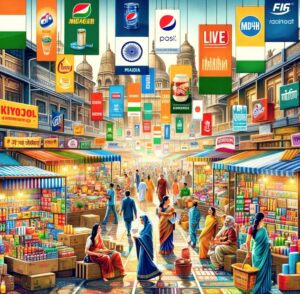1. Business Models and Segments
GTL Infrastructure Ltd: GTL Infrastructure Ltd focuses on providing shared telecom infrastructure services, including towers and related assets. The company leases its infrastructure to multiple telecom operators, reducing the capital expenditure burden for these operators. GTL primarily operates in the passive telecom infrastructure segment.
Indus Towers Limited: Indus Towers Limited, one of the largest tower companies globally, provides telecom infrastructure services primarily through its extensive tower network. The company offers a range of services, including tower sharing and energy management. Indus Towers serves major telecom operators and focuses on enhancing network reach and quality.
RailTel Corporation of India Limited: RailTel Corporation of India Limited, a Government of India enterprise, operates in the telecom infrastructure sector with a focus on providing broadband and VPN services. RailTel leverages its extensive fiber optic network laid along railway tracks to offer connectivity solutions to various sectors, including telecom, education, and defense.
2. Future Strategies
GTL Infrastructure Ltd: GTL Infrastructure aims to expand its tower portfolio and enhance tenancy ratios by attracting more telecom operators to use its infrastructure. The company is also exploring opportunities in emerging technologies like 5G to stay relevant in the evolving telecom landscape.
Indus Towers Limited: Indus Towers is focused on expanding its tower base and increasing co-location tenancies to drive revenue growth. The company is investing in green energy solutions to reduce operational costs and its carbon footprint. Indus Towers is also preparing for the 5G rollout, which will require significant infrastructure support.
RailTel Corporation of India Limited: RailTel’s strategy includes expanding its broadband services, enhancing the reach of its Wi-Fi networks, and leveraging its infrastructure for smart city projects. The company is also focused on diversifying its service offerings to include cybersecurity solutions and data center services, aiming to become a holistic ICT provider.
3. Strengths
GTL Infrastructure Ltd:
- Extensive tower network with significant market presence.
- Strong relationships with major telecom operators.
- Focus on shared infrastructure reduces costs for clients.
Indus Towers Limited:
- Largest tower network in India, providing extensive coverage.
- Strong financial performance with high revenue visibility.
- Robust tenancy ratio and long-term contracts with telecom operators.
RailTel Corporation of India Limited:
- Strategic advantage of a vast fiber optic network along railway tracks.
- Government backing ensures stability and credibility.
- Diversified service portfolio catering to various sectors.
4. Weaknesses
GTL Infrastructure Ltd:
- High debt levels affecting financial flexibility.
- Dependence on a few key clients for a significant portion of revenue.
- Operational challenges in maintaining and expanding the tower network.
Indus Towers Limited:
- Regulatory challenges in the telecom sector can impact operations.
- High reliance on telecom operators’ financial health.
- Environmental and community concerns related to tower installations.
RailTel Corporation of India Limited:
- Heavy reliance on Indian Railways for network infrastructure.
- Limited presence in the competitive urban telecom market.
- Slower decision-making processes due to government ownership.
5. Profit Formulas
GTL Infrastructure Ltd: GTL Infrastructure generates revenue by leasing its tower infrastructure to telecom operators. The company charges a recurring fee for each tenancy, aiming to maximize tower utilization and tenancy ratios to improve profitability.
Indus Towers Limited: Indus Towers’ profit formula revolves around leasing tower space to multiple telecom operators, thereby increasing tenancy ratios. The company also focuses on cost management through energy-efficient solutions and operational excellence.
RailTel Corporation of India Limited: RailTel’s revenue model is based on providing broadband and connectivity services. The company earns through subscription fees from its broadband users, lease agreements for its fiber optic network, and project-based income from smart city and IT solutions.
6. Investors and Customers
GTL Infrastructure Ltd: Investors include domestic and foreign institutional investors. Major customers are telecom operators like Vodafone Idea, Bharti Airtel, and Reliance Jio.
Indus Towers Limited: Indus Towers’ investor base includes Bharti Airtel, Vodafone Idea, and private equity firms. Key customers are leading telecom operators, including Bharti Airtel, Vodafone Idea, and Reliance Jio.
RailTel Corporation of India Limited: RailTel is primarily government-owned, with Indian Railways being a significant stakeholder. Customers include various government departments, educational institutions, and private sector companies requiring broadband and ICT solutions.
7. Market Capitalization and Financial Indicators
GTL Infrastructure Ltd: As of the latest available data, GTL Infrastructure’s market capitalization is approximately ₹2,000 crores. The company has been facing financial challenges with high debt levels, impacting its profitability and operational flexibility.
Indus Towers Limited: Indus Towers boasts a market capitalization of around ₹65,000 crores, reflecting its strong market position. The company has a robust financial profile with steady revenue growth and healthy EBITDA margins.
RailTel Corporation of India Limited: RailTel’s market capitalization stands at about ₹5,000 crores. The company has demonstrated consistent revenue growth and profitability, supported by its diversified service offerings and government projects.
Conclusion
GTL Infrastructure Ltd, Indus Towers Limited, and RailTel Corporation of India Limited each play critical roles in India’s telecom infrastructure landscape. GTL Infrastructure focuses on shared tower infrastructure, Indus Towers dominates with its extensive tower network and energy-efficient solutions, while RailTel leverages its unique fiber optic network along railway tracks to provide connectivity solutions. Each company faces distinct challenges and opportunities, with future growth likely driven by technological advancements, regulatory changes, and strategic initiatives in expanding service offerings.
for more Indus Towers vs. Bharti Infratel vs. Reliance Jio Infratel vs. ATC India: Comprehensive Analysis of India’s Telecom Tower Industry




